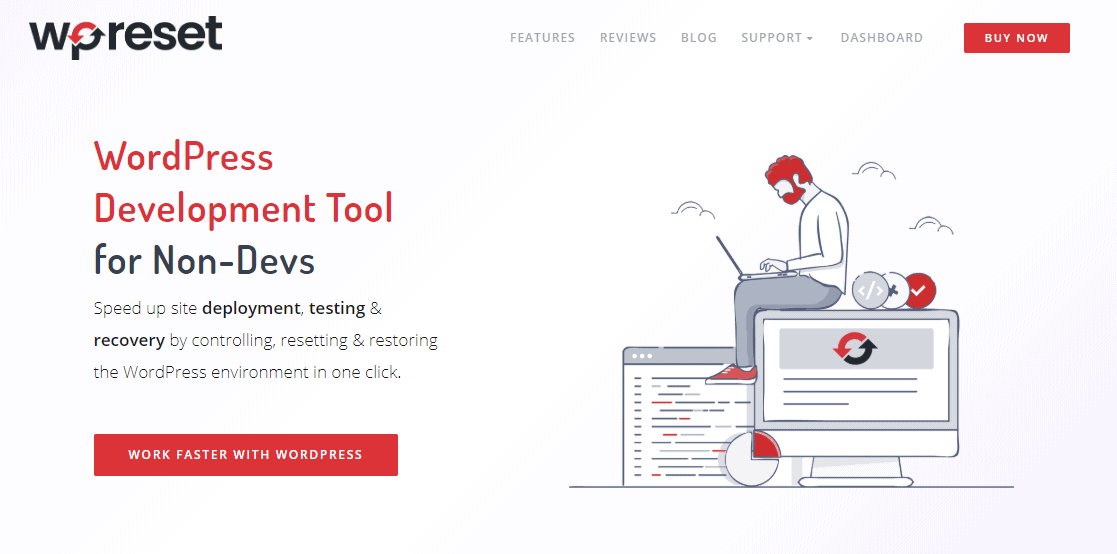There are many reasons to change hosts or servers. You may have had outgrown your current hosting plan, or you found a faster host.
That’s enough of a reason to change servers. Read on to find out how to migrate a website from one server to another easily.
Double Check Your New Server
It makes sense to check your hosting plan before you change servers. You want to be absolutely certain that the new server meets your needs.

Your new server should have the bandwidth and speed to improve your site’s performance, not hinder it. Take a moment to learn about bandwidth and how it can impact your site.
Have the free Emergency Script ready
Before making any changes, you should have the free Emergency Recovery Script ready. This free script will work independently, so even if something goes wrong during the migration, the Emergency Recovery Script will help you restore core files, reset passwords, create new admin accounts, and much more. Check the video below to see the Emergency Recovery Script in action.
Make a Backup of Your Site
Once you have confirmed your new server or hosting plan, you can then take steps to migrate your site to the new server.
That starts with a backup of your site. You can do this in CPanel. Under File, click on Backups. You’ll then have the option to generate a full backup. Choose the Home Directory on the next page and check whether or not you want an email notification when the backup is done.
After the backup is complete, you can download the compressed file. Don’t be alarmed because it has a .gz file extension.
FTP is an easy way to back up your files. When you backup using FTP, all you have to do is upload the files to the new server.
You need to have an FTP client, such as Filezilla and your old server’s FTP login information.
Add Your Domain to the New Server
If you’re changing hosts, you may have to add your site to the new server. Your host may have already done this for you. WhoIsHostingThis will provide more tips on that
Pay special attention to the sitemap
If you did set up a sitemap on your website (which is highly recommendable), make sure to avoid adding redirected links to the sitemap file, and if you want to snatch the knowledge about setting one up, here’s a good place to start to learn more.
Don’t Forget About Email
When you’re migrating sites, you get so focused on your site that you forget to set up email accounts with your new hosting account. That could leave you missing potentially important emails for a while.

You’ll go to Email in CPanel or the Email Settings in your new host accounts. You’ll then go to Email Accounts and create your email addresses there.
If you’re using Gmail or Outlook, remember to change the mail server settings to reflect your new password and mailbox changes.
See What Tools Your Host Has
You may have migrated to a new host that has tools to make it easier to migrate your site. If you have a WordPress site, your host may have a migration plugin that makes the entire process easy. For example, AbeloHost provides you with everything you need to migrate your site as well as offers to do the migration for you, free of any charge.
You just install the plugin follow the instructions, and that’s it. You skip down this list to changing your DNS.
Upload Your Site Via FTP
If your host doesn’t have a plugin or easy method to migrate your site, you can upload your files via FTP. This time, you’ll need to have your new server’s FTP login information, and then upload the files to your new server.
Change Your DNS
Where did you register your domain name?
You can choose to transfer the domain name to your new host or leave it as is. You do not need to use the same company to park your domain name and host your website.
In most cases, its easier to keep them at separate companies. You’re going to change hosts more often than you need to change where it’s registered. Plus, transferring a domain name can take a little time.
No matter where you have your domain name, you need to make sure that it points to the new host in the DNS settings.
Your new hosting company will give you the correct DNS settings. They’ll look at something like ns1.newhostingco.com, ns2.newhostingco.com, and ns3.newhostingco.com.
If you are staying with the same host, and only changing servers, you’ll want to check with your host to see what your new DNS is.
Wait and Test
When you make a change to your site’s DNS, you have to wait for the changes to propagate. That means that all other servers are updated to your new DNS.
It can take up to 48 hours for the DNS changes to propagate.
Once the changes have taken place, you want to go through and test your site on your new host’s servers. Check all the pages, make sure that the content shows up properly, and
If you do need to make additional changes to your website and you think it should not be seen by the public yet, then you can install the UnderConstructionPage plugin or the Coming Soon & Maintenance Mode one which are both great solutions for creating temporary pages for your site that will stop visitors from getting the 404 error.
Both of the plugins work on the drag-and-drop principle and come with tons of templates/themes you can customize and use for your site. And on top of that, they will enable you to enrich your pages with an SEO setup, autoresponder and emailing services, access control, countdowns, image/video backgrounds, and so much more!
What if You Want to Start Over?
In some cases, you only want to start your site over completely. In that case, you’ll want to set up a staging site on your new host or a temporary site.

You’ll then start building out the redesign of your site. If you want to copy over your content, you can do a copy and paste your pages to your new site.
While you’re redesigning your site you will make mistakes and will, of course, change your mind quite a few times. For situations like these, it’s great to have a tool that will let you reset the site or go back to a previous version of it, and the best tool of that sort is called WP Reset.
WP Reset will come packed with resetting tools that can wipe your entire site clean or just specific aspects of it. And with the help of the database snapshots that it will create, you can restore the state that your site was in before a specific change was made.
If that wasn’t enough, this plugin will also let you create collections of themes and plugins which you can then install in just one click, after a reset or at any time that you want.
Also, if you remove pages, you want to set up redirects for those pages, so it doesn’t mess up your SEO. You can use a plugin to set up page redirects.
Once you have your new site ready to go, you’ll change the DNS settings, wait and test your new site. Once you are sure that your new site works, you can officially leave your old hosting company.
How to Migrate a Website From One Server to Another
You never know when you need to know how to migrate a website from one server to another. You may need to change your hosts or upgrade your hosting plan.
It’s a surprisingly simple process. Make sure you backup your site, move files from one server to another and change the DNS to point to the new servers.
If you don’t want to migrate files via FTP, you can turn to a plugin that makes migrating your site much easier. Even beginners can migrate an entire site in just a few minutes.
For more website tips and tricks, check out our blog often for more useful articles.

